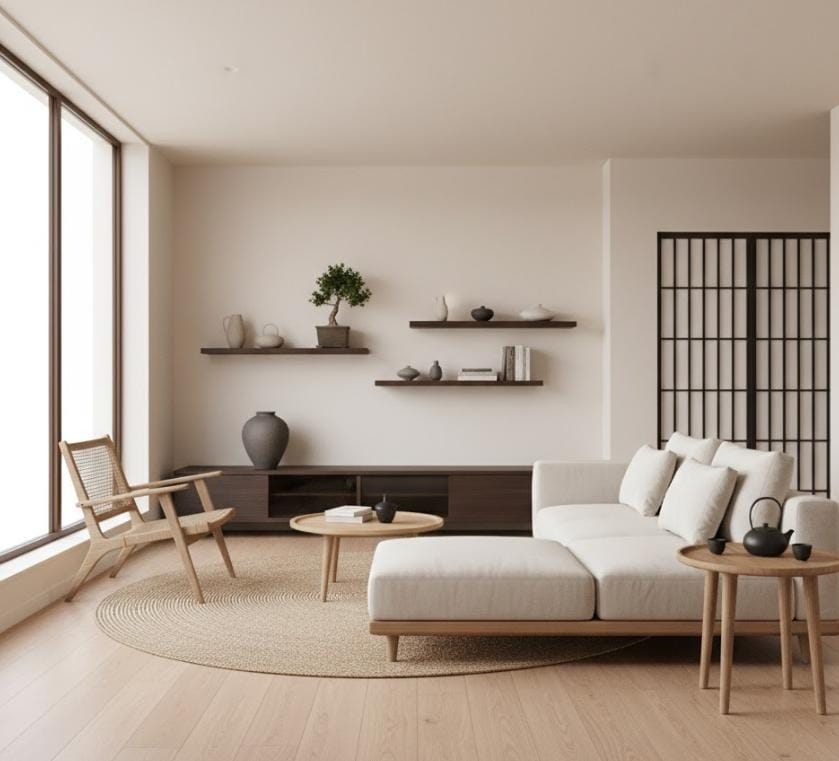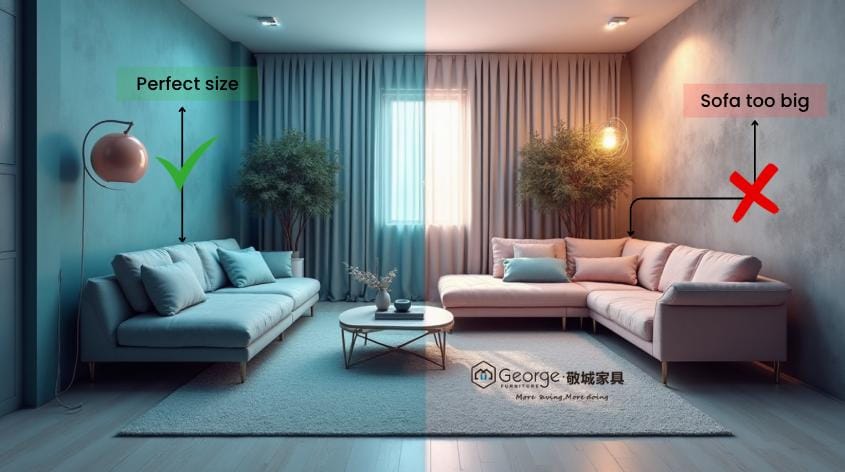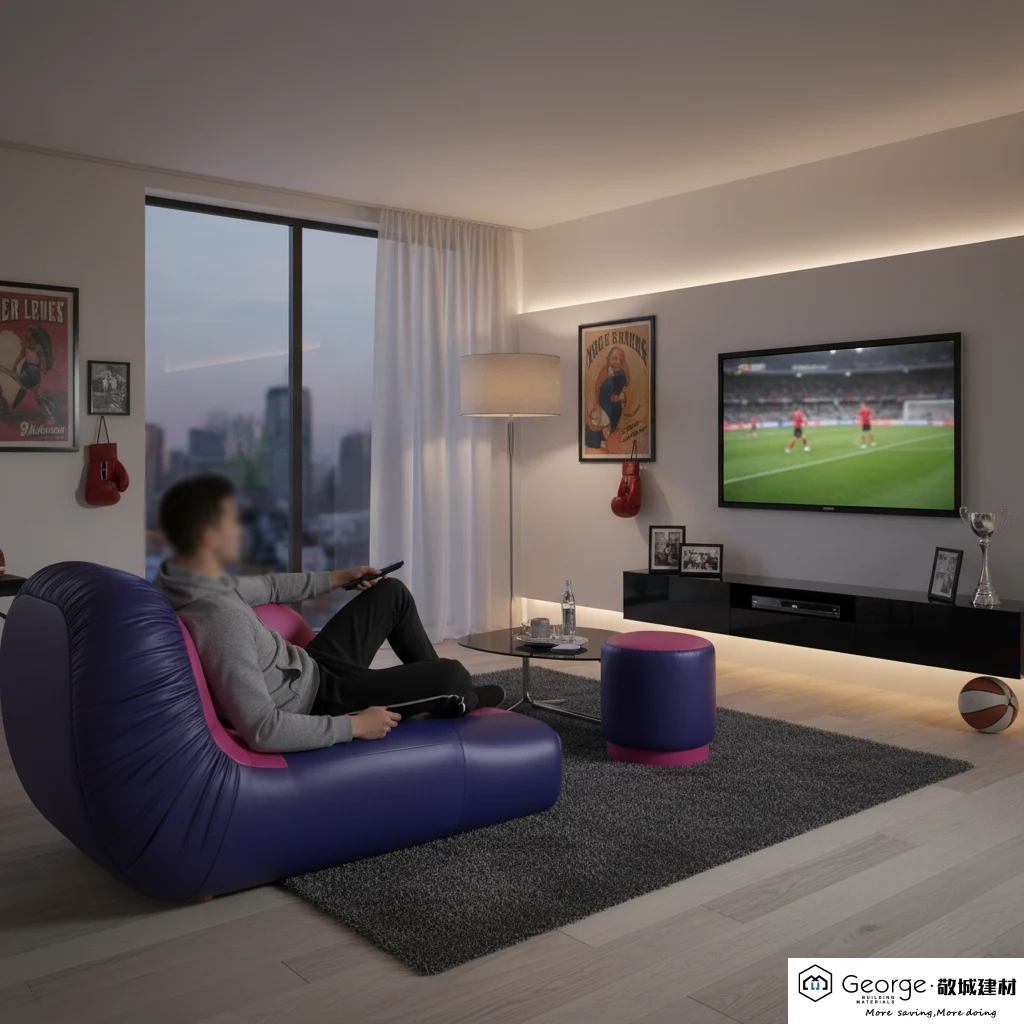The right living room furniture design layout can completely transform how your space looks and feels. Whether you’re working with a sprawling open-concept area or a cozy apartment living room, understanding furniture arrangement principles helps you create a functional, beautiful space that reflects your personal style.
In 2025, living room design is shifting dramatically. Gone are the days of formal, rarely-used spaces with matching furniture sets pushed against walls. Today’s layouts prioritize conversation, flexibility, and comfort while incorporating smart storage solutions and multi-functional pieces.
Table of Contents
Understanding Living Room Layout Fundamentals
Before diving into specific styles, let’s establish the core principles that make any living room furniture arrangement successful.

The Golden Rules of Furniture Placement
First and foremost, pull your furniture away from the walls. This single change revolutionizes most living rooms, creating intimate conversation areas and making rooms feel larger rather than smaller. When everything lines the perimeter, you’re left with awkward dead space in the center and seating that feels disconnected.
Establish your focal point early in the planning process. This could be a fireplace, entertainment center, stunning window view, or architectural feature. Your seating arrangement should orient around this focal point, creating a natural gathering spot that draws people in.
Traffic flow matters more than most homeowners realize. Allow 30-36 inches for main walkways and at least 18 inches between coffee tables and sofas. Map out how people move through your space before committing to a layout, especially in rooms with multiple entry points or open floor plans.
Style-Specific Layout Approaches
Different design aesthetics call for unique furniture arrangement strategies. Here’s how to nail the layout for eight popular living room styles.
Contemporary Living Room Furniture Layout

Contemporary spaces emphasize clean lines, open flow, and intentional negative space. These layouts work beautifully for those who appreciate minimalism without sacrificing comfort.
Key Layout Elements:
- Low-profile furniture with sleek silhouettes
- Floating arrangements that create distinct zones
- Asymmetrical balance rather than perfect symmetry
- Integrated technology with hidden charging stations and cord management
The contemporary approach often features a sectional sofa as the anchor piece, positioned to face outward into the room rather than against a wall. Pair this with sculptural accent chairs that double as art pieces, and keep coffee tables simple with glass or lacquered finishes.
Pricing Range: Contemporary furniture typically runs $3,000-$8,000 for a complete living room set, with individual statement pieces ranging from $800-$2,500.
Contact Us for a Project Consultation
Why pay more? At George’s Furniture, we cut out the middlemen to bring you premium furniture, flooring, doors, windows, and more—all at prices up to 40% below retail. With 19+ years of experience and 600 consultants, we provide complete, custom project solutions, from initial design to final delivery.
Scandinavian Living Room Design Layout
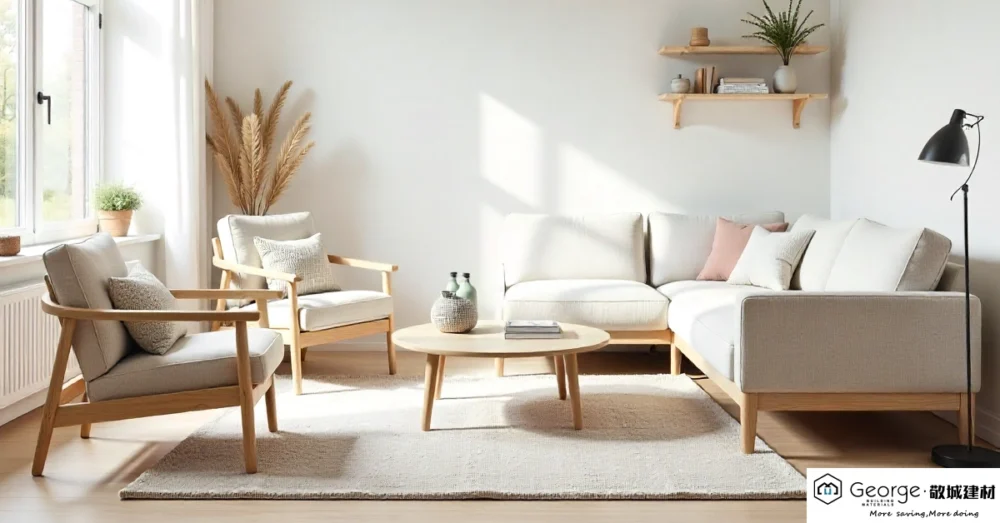
Scandinavian design prioritizes function, natural light, and cozy minimalism. The Danish concept of “hygge” influences every placement decision, creating spaces that feel both airy and inviting.
Layout Strategy:
- Position furniture to maximize natural light exposure
- Use low, streamlined pieces that don’t block window views
- Create intimate seating clusters with plush textiles
- Incorporate flexible pieces that serve multiple purposes
A typical Scandinavian layout might feature a light-colored sofa with wooden legs positioned perpendicular to large windows, flanked by two matching armchairs. Add a sheepskin throw and chunky knit blankets for warmth, keeping the palette neutral with pops of muted blue or sage green.
Pricing Range: Scandinavian furniture offers excellent value, with complete sets ranging from $2,500-$6,000. Quality pieces from brands like IKEA, Article, and local artisans provide durability at accessible price points.
Traditional Living Room Furniture Arrangement
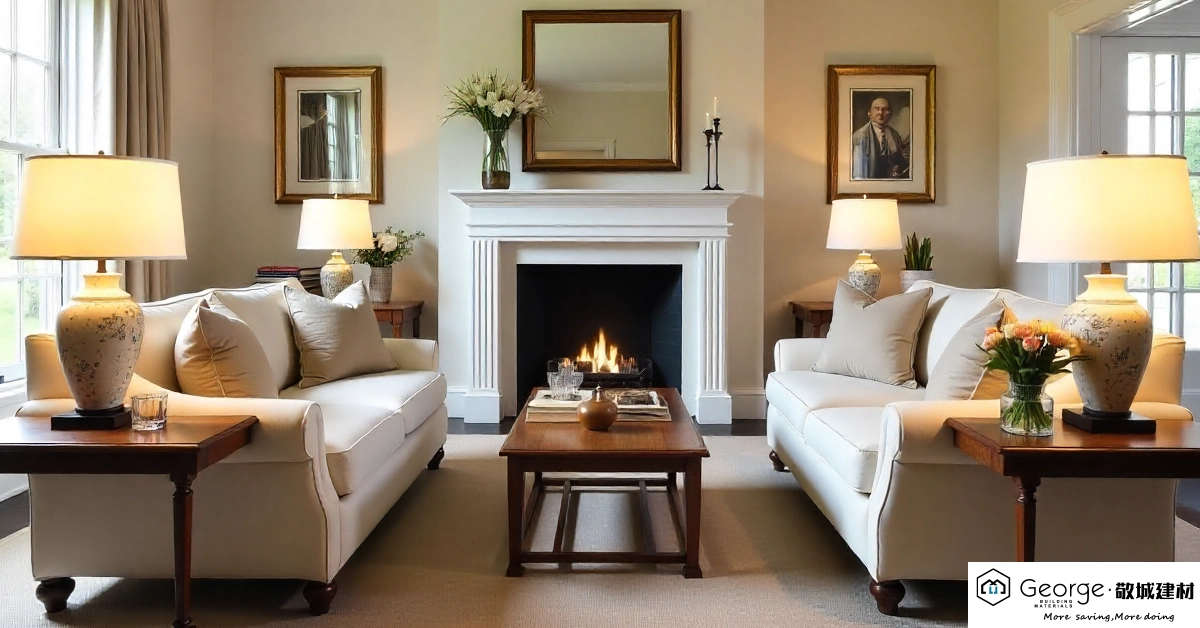
Traditional layouts embrace symmetry, formality, and classic proportions. However, 2025’s approach softens these conventions, creating livable spaces rather than museum-like showrooms.
Arrangement Principles:
- Symmetrical furniture placement anchored by a focal point
- Matched pairs of side tables, lamps, and accent chairs
- Layered seating with a mix of sofas and upholstered chairs
- Formal conversation areas with facing sofas
Position two identical sofas facing each other with a coffee table between them, creating the classic conversational square. Add wing chairs at either end near the fireplace, and complete the arrangement with matching table lamps for balanced lighting.
Pricing Range: Traditional furniture represents a significant investment, typically $5,000-$12,000 for quality pieces that last decades. Custom upholstery and heirloom-quality wood furniture justify higher price points.
Farmhouse Living Room Furniture Ideas
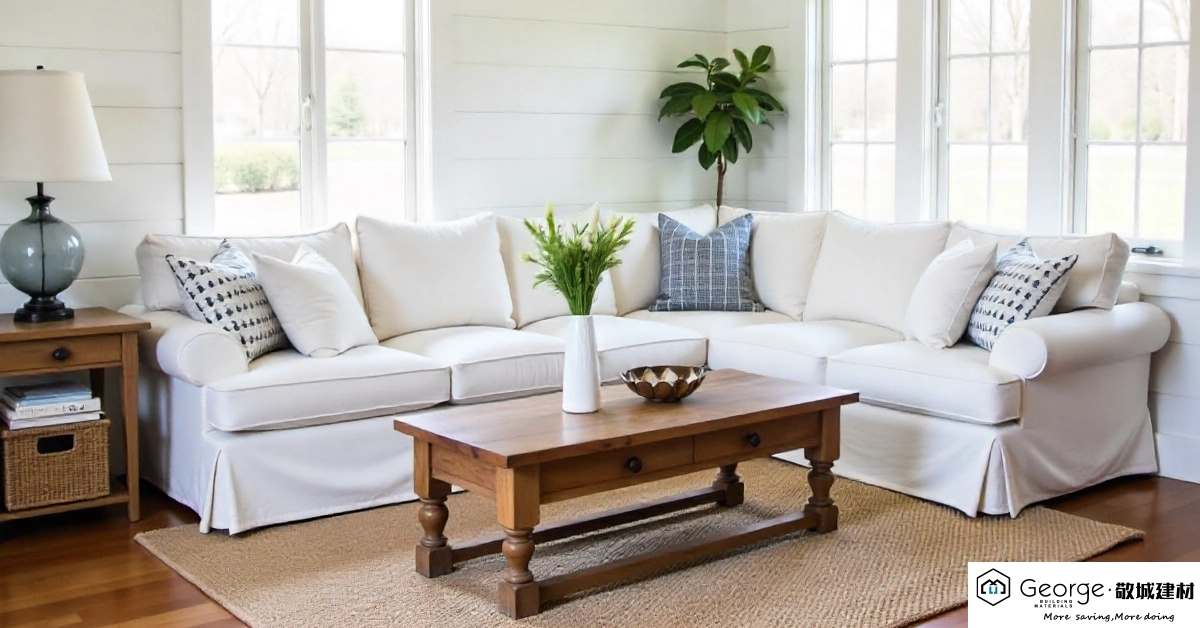
Farmhouse style blends rustic charm with modern comfort, creating warm, welcoming spaces perfect for family gathering and entertaining.
Layout Approach:
- Oversized, comfortable seating that invites lounging
- Reclaimed wood pieces mixed with soft upholstery
- Open arrangements that accommodate large groups
- Practical storage integrated throughout
The ideal farmhouse layout features a large sectional or slipcovered sofa facing a shiplap accent wall or stone fireplace. Add a reclaimed wood coffee table, vintage-inspired storage cabinets, and plenty of throw pillows in linen and cotton fabrics.
Pricing Range: Farmhouse furniture spans a wide range, from budget-friendly options at $2,000-$4,000 to premium custom pieces totaling $7,000-$10,000.
Industrial Living Room Furniture Design
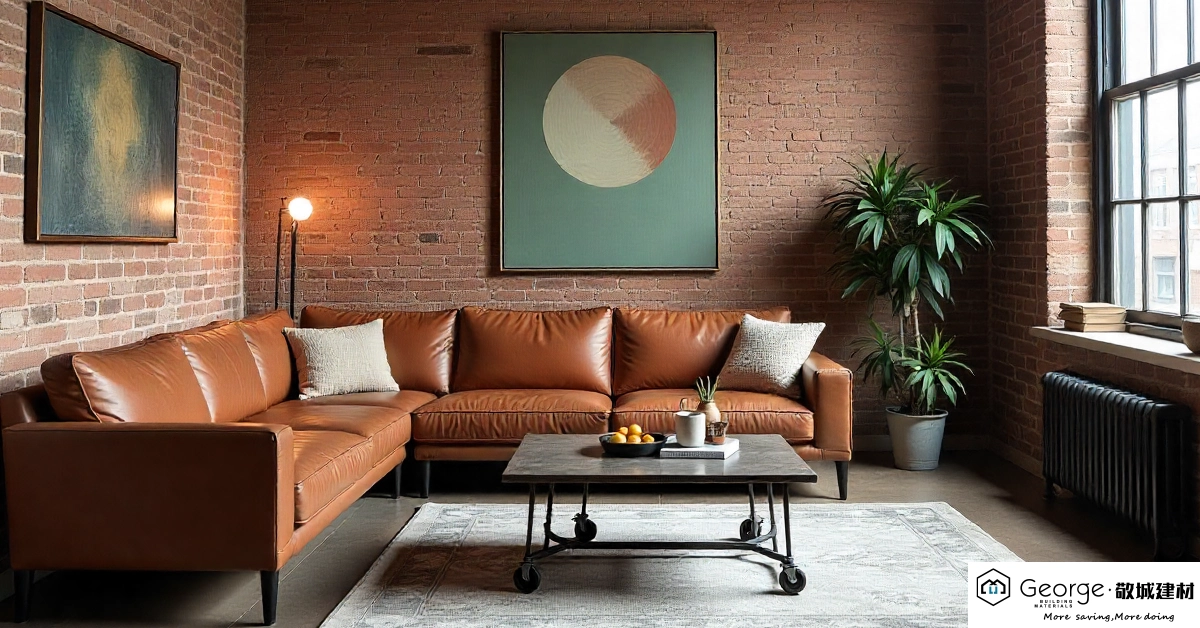
Industrial design celebrates raw materials, exposed elements, and utilitarian aesthetics. These layouts work exceptionally well in lofts and converted spaces with high ceilings.
Design Strategy:
- Metal and wood combinations with visible hardware
- Open shelving units as room dividers
- Flexible, movable furniture pieces
- Minimal window treatments to preserve natural light
Create an industrial layout with a leather sofa positioned on a large area rug to define the space, paired with metal-framed chairs and a reclaimed wood coffee table on casters. Wall-mounted shelving keeps the floor plan open while providing essential storage.
Pricing Range: Industrial pieces range from $3,000-$7,000 for complete setups, with individual statement pieces like leather sofas costing $1,500-$3,500.
Contact Us for a Project Consultation
Why pay more? At George’s Furniture, we cut out the middlemen to bring you premium furniture, flooring, doors, windows, and more—all at prices up to 40% below retail. With 19+ years of experience and 600 consultants, we provide complete, custom project solutions, from initial design to final delivery.
Bohemian Living Room Layout Ideas
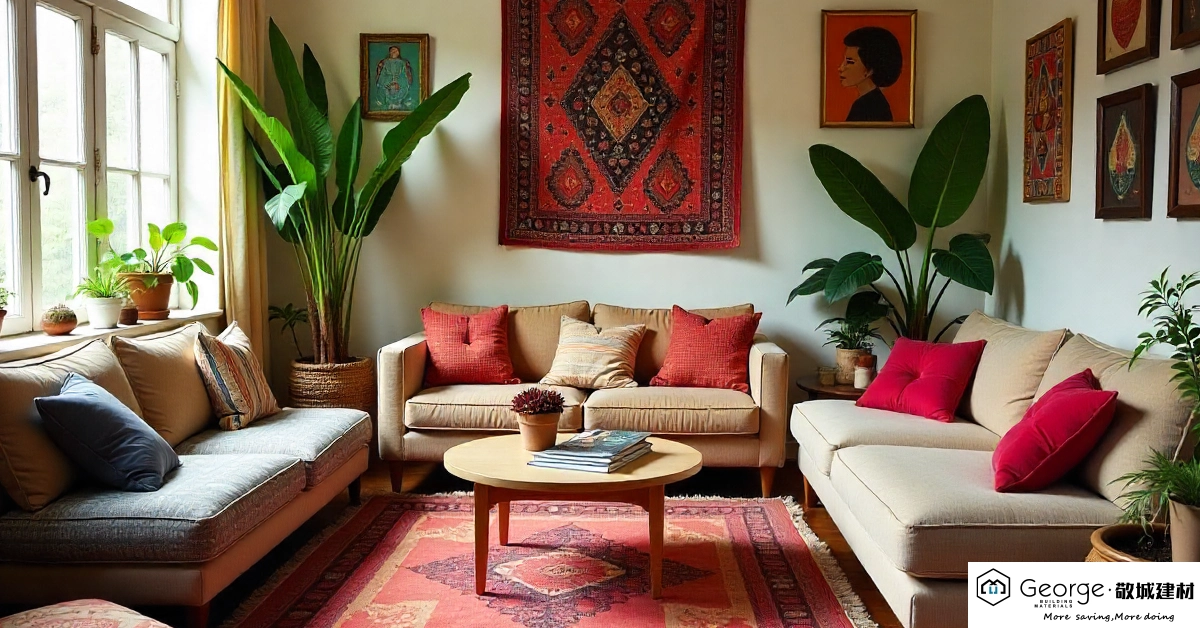
Bohemian spaces embrace eclecticism, layered textures, and personal expression. These layouts prioritize comfort and creativity over rigid rules.
Layout Philosophy:
- Low seating arrangements with floor cushions and poufs
- Layered rugs defining multiple zones
- Mix-and-match furniture from different eras
- Abundant plants creating natural dividers
A boho layout might feature a low-slung sofa with a collection of mismatched chairs arranged in a casual circle. Layer multiple rugs, add floor cushions for flexible seating, and incorporate plants at varying heights throughout the space.
Pricing Range: Bohemian style offers the most budget flexibility, allowing complete rooms from $1,500-$4,000 by mixing vintage finds, affordable modern pieces, and DIY elements.
Rustic Living Room Furniture Arrangement
Rustic design brings the outdoors in with natural materials, earthy colors, and cozy textures. These arrangements work beautifully in cabins, mountain homes, and countryside residences.
Arrangement Essentials:
- Substantial wood furniture with visible grain
- Stone or wood focal points like mantels
- Cozy seating clusters around central gathering spots
- Natural fiber rugs anchoring furniture groupings
Position a large leather or heavy fabric sofa facing a stone fireplace, with log-style side tables and a chunky wood coffee table completing the arrangement. Add a cowhide or jute rug to ground the space.
Pricing Range: Rustic furniture investments typically range from $4,000-$9,000, with solid wood pieces commanding premium prices for longevity.
Mid-Century Modern Living Room Layout

Mid-century modern design continues dominating 2025 trends with its timeless appeal, clean lines, and organic forms.
Layout Guidelines:
- Furniture with tapered legs creating visual lightness
- Curvaceous shapes balanced with geometric patterns
- Conversation-focused arrangements
- Statement lighting as focal points
The classic mid-century layout features a sofa with exposed wooden legs positioned at an angle, paired with iconic lounge chairs like Eames or Womb chairs. A sleek credenza along one wall provides storage while maintaining the room’s horizontal emphasis.
Pricing Range: Authentic mid-century pieces range from $4,000-$10,000, while quality reproductions offer similar aesthetics at $2,500-$6,000.
2025 Living Room Layout Trends
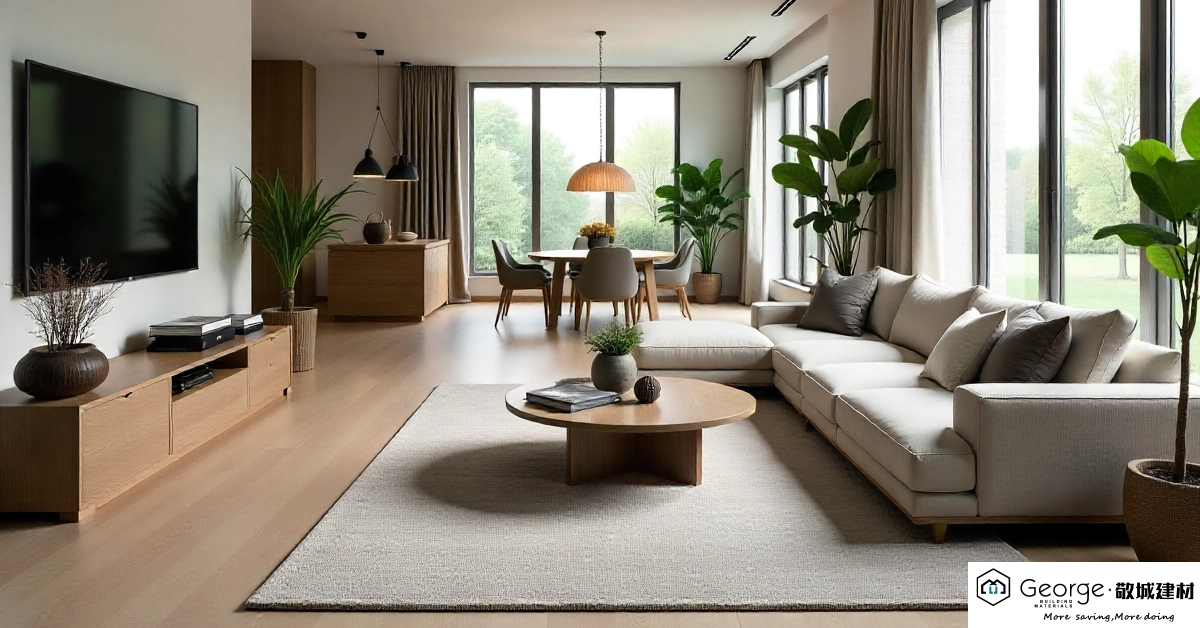
Current design movements are reshaping how we think about living room arrangements:
Conversation Over Television: Layouts now prioritize face-to-face interaction rather than orienting everything toward a screen. Multiple seating groups encourage mingling and connection.
Flexible, Modular Furniture: Lightweight chairs, nesting tables, and modular sectionals allow easy reconfiguration for different activities and guest counts.
Biophilic Design Integration: Furniture placement now considers plant locations, natural light paths, and views of outdoor spaces.
Technology Integration: Smart lighting, wireless charging furniture, and discreet cable management seamlessly blend into layouts without cluttering surfaces.
Layout Comparison Table
| Style | Best For | Key Features | Investment Level | Flexibility |
| Contemporary | Modern homes, minimalists | Clean lines, low-profile furniture | $3,000 – $8,000 | Medium |
| Scandinavian | Small spaces, natural light lovers | Light woods, neutral palette | $2,500 – $6,000 | High |
| Traditional | Formal settings, symmetry enthusiasts | Matched pairs, classic proportions | $5,000 – $12,000 | Low |
| Farmhouse | Family homes, casual entertaining | Comfortable, oversized seating | $2,000 – $7,000 | Medium |
| Industrial | Lofts, open concepts | Metal/wood mix, utilitarian | $3,000 – $7,000 | High |
| Bohemian | Creative spaces, eclectic tastes | Layered textures, mixed styles | $1,500 – $4,000 | Very High |
| Rustic | Cabins, nature-inspired homes | Natural materials, substantial pieces | $4,000 – $9,000 | Low |
| Mid-Century Modern | Vintage lovers, timeless design | Organic shapes, tapered legs | $2,500 – $10,000 | Medium |
Contact Us for a Project Consultation
Why pay more? At George’s Furniture, we cut out the middlemen to bring you premium furniture, flooring, doors, windows, and more—all at prices up to 40% below retail. With 19+ years of experience and 600 consultants, we provide complete, custom project solutions, from initial design to final delivery.
Pros and Cons of Popular Layout Configurations
Symmetrical Arrangement
- Pros: Creates formal elegance, easy to balance, timeless appeal
- Cons: Can feel rigid, requires matched pairs, less flexible for modern living
Floating Furniture
- Pros: Maximizes space perception, improves traffic flow, creates intimacy
- Cons: Requires larger rooms, may feel exposed in small spaces
L-Shaped Layout
- Pros: Maximizes seating, works in corners, defines zones
- Cons: Can block sightlines, difficult to add extra seating, dominates smaller rooms
U-Shaped Arrangement
- Pros: Excellent for conversation, accommodates many guests, creates cozy feel
- Cons: Requires significant space, limits flexibility, can feel closed off
Open Concept Zoning
- Pros: Promotes flow, versatile, contemporary aesthetic
- Cons: Requires careful rug placement, noise considerations, needs visual anchors
Frequently Asked Questions
1. How far should a sofa be from the wall?
Pull your sofa at least 3-12 inches from the wall depending on room size. In larger rooms, floating the sofa several feet from the wall creates a more intimate conversation area and allows for sofa tables behind the piece. This technique makes rooms feel bigger, not smaller, while improving the overall flow.
2. What is the best furniture layout for a small living room?
Small living rooms benefit from multifunctional furniture, vertical storage, and smart scaling. Choose a loveseat or apartment-sized sofa instead of a full-size sectional. Use armless chairs that tuck under tables, wall-mounted shelving, and glass or acrylic coffee tables that maintain visual openness. Keep furniture proportional to the room—oversized pieces overwhelm small spaces.
3. How do I arrange furniture with both a TV and fireplace?
When your room has two focal points, create an L-shaped or angled arrangement. Position the main sofa to face the fireplace while angling chairs toward both the fireplace and TV. Alternatively, mount the TV above the fireplace if viewing angles allow, though this isn’t ideal for neck comfort during extended watching. In spacious rooms, create two distinct zones with separate furniture groupings.
4. What is the 2-3 rule for living room furniture?
The 2-3 rule suggests leaving 2-3 feet of walking space around furniture pieces. This creates comfortable traffic flow without wasted space. Apply this to pathways between seating areas, around coffee tables, and near room entrances.
4. How do I create zones in an open-concept living room?
Use area rugs to define distinct zones within open spaces. A rug should extend under the front legs of all seating pieces in a grouping. Layer different lighting types (ambient, task, accent) in each zone. Position furniture with backs to create subtle boundaries, or use open shelving units as transparent room dividers that maintain sight lines.
5. Should all living room furniture match?
Absolutely not. In fact, perfectly matched furniture sets look dated in 2025. Mix different pieces with complementary styles, varying heights, and contrasting textures. Maintain cohesion through color palette, material choices, or design era rather than identical pieces. This approach creates depth, character, and a collected-over-time aesthetic.
6. What size area rug do I need for my living room?
Select rugs where the front legs of all major seating pieces rest on the rug surface. For most living rooms, this means an 8×10 or 9×12 rug. In larger spaces, consider 10×14 or larger. All furniture legs should sit completely on or completely off the rug—avoid having just the coffee table on the rug, which visually fragments the space.
7. How can I make my living room feel larger?
Choose furniture with exposed legs rather than skirted pieces that reach the floor. Opt for glass or lucite coffee tables that maintain visual flow. Use mirrors strategically to reflect light and views. Keep the color palette light and cohesive. Float furniture away from walls to create the illusion of more space, and avoid blocking windows with tall furniture pieces.
Final Thoughts
The perfect living room furniture design layout balances your personal style, functional needs, and spatial constraints. Whether you’re drawn to contemporary minimalism, cozy farmhouse charm, or eclectic bohemian vibes, the fundamental principles remain constant: create conversation areas, allow proper traffic flow, and arrange furniture to enhance your focal points.
Remember that your living room should evolve with your life. Don’t be afraid to experiment with different arrangements, especially as your needs change or you add new pieces. The layouts trending in 2025 prioritize flexibility and personalization over rigid design rules.
For those sourcing furniture, George’s Furniture offers wholesale options that make quality pieces accessible at any budget level. Whether you’re furnishing your first apartment or redesigning your forever home, investing in well-made furniture with timeless appeal ensures your layout looks intentional and sophisticated for years to come.
Start with one of the style-specific approaches outlined here, adapt it to your space constraints, and add personal touches that make the room uniquely yours. Your living room should tell your story while providing a comfortable, functional space for daily life and special gatherings alike.

